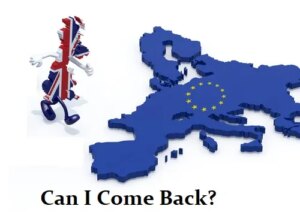Understanding the Economic Tides of Europe: Trade, Tariffs, and the Marxist Agenda
At Extreme Investor Network, we pride ourselves on providing insightful analysis that cuts through the noise. Today, we delve into the tangled web of European economics, the challenge of Brexit, and the implications of political ideologies on trade. As the tides of economic policy shift, understanding these dynamics is essential for investors and policymakers alike.

The Press and Perception
In recent debates, the media’s stance often seems more about portraying political alignments than truth. For instance, criticism of former President Trump’s tariffs and trade policies frequently overshadows any factual analysis. If Trump proposed initiatives to extend lifespans to counteract declining birth rates, it’s easy to imagine the press’s response: twisted narratives focused on sensationalism—purely to opposition his agenda. Such a climate makes it difficult for reasoned discourse on critical economic policies.
Starmer’s Struggle with Brexit
Take Labour leader Keir Starmer, for example. Firmly rooted in a Marxist ideology, he is vocal about his desire to reverse Brexit. However, he is acutely aware of the complexities involved in that undertaking. Instead, Starmer seeks to form tighter trade ties with the European Union while adopting regulations that have historically stifled economic growth within the bloc. Our analysis tells us that, despite having 450 million citizens, the EU accounts for only $1.20 of every $10 spent globally, highlighting a stark contrast to America’s more robust consumer market.

Economic Decisions vs. Political Maneuvering
From a purely economic standpoint, Starmer seems to be turning his back on the United States—the world’s largest consumer market that offers opportunities far exceeding what the EU can provide. This trend signals a political rather than an economic rationale; it appears to align more closely with prescriptive Marxist principles than practical fiscal policy. As we’ve forecasted, the decisions made in 2025 will delineate significant moves into a ‘panic cycle’—meaning investors should be prepared for heightened volatility and risk.

Europe’s Hostility Towards Trade
Historically, Europe has been unfriendly towards trade, often adopting protectionist stances that mirror Marxist values. Notably, this attitude isn’t new. Remember when Charles de Gaulle expelled American military personnel from France while keeping American nuclear forces at bay? Such sentiments weren’t born overnight; they stem from a historical narrative that France and much of Europe have long adhered to, viewing their past victories under Napoleon as a benchmark for contemporary policies.

Macron’s Nuclear Ambitions and the EU’s Stance
This protectionist mindset continues today, as exemplified by Emmanuel Macron’s ambitions. Seeking to position France as a security leader in Europe, he has proposed sending troops to Ukraine—a move many analysts decry as a potential catalyst for World War III due to the existing geopolitical tensions. His approach to balancing Europe’s defense against Russia reflects a reluctance to embrace American partnership, instead fostering an environment of economic insularity.
Trade Barriers and Regulations
While the EU does not enforce an outright ban on American agricultural products, it enforces stringent regulations that serve as formidable barriers to trade.
- Hormone-Treated Beef: The prohibition on hormone-treated beef has long been a contentious issue in U.S.-EU trade discussions.
- Chlorine-Washed Poultry: The EU’s aversion to chlorine-washed poultry inhibits the import of a popular American product.
- GMOs: The rigorous regulations surrounding genetically modified organisms considerably limit U.S. agricultural exports into Europe.
These regulatory hurdles reflect underlying differences in economic philosophies—a trend that has not only hampered trade negotiations but has also continued to create tension in international relations.

Historical Precedents of Protectionism
Looking back, Europe’s penchant for protectionism isn’t a modern phenomenon. Following World War I, many European countries, including France and the UK, adopted high tariffs as a means of shielding their economies, leading to a decade where isolationism and economic fragmentation became rampant. For instance, the 1927 Tariff Law in France exemplified this shift, marking an era of aggressive protectionist policies.
In the UK, the 1921 Safeguarding of Industries Act aimed to bolster strategic sectors at a time when competition from abroad threatened national security—a clear precursor to the wave of protectionist measures that marked the 1930s.
Conclusion: Navigating Future Economic Landscapes
Today’s economic landscape is starkly different from the interwar period, yet echoes of history can be identified. As trade barriers rise and political agendas become increasingly intertwined with economic policy, investors must remain vigilant and adaptable. At Extreme Investor Network, we believe understanding these dynamics is crucial not only for informed investment decisions but also for anticipating shifts in the global economy.
Enhancing our understanding of these factors grants us the foresight needed to navigate this volatile landscape. Whether you’re an investor, a business leader, or simply an interested observer, grasping these trends will be instrumental as we progress through the critical years ahead.

